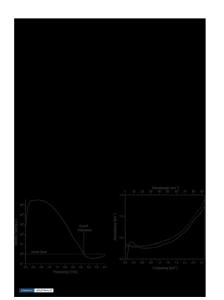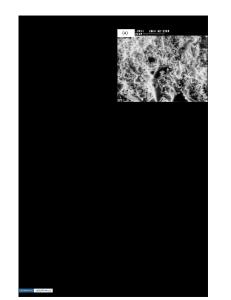Effect of Lanthanum-doping on the Dielectric Properties of Pb(Fe 1/2 Ta 1/2 )O 3 Relaxor Ferroelectrics
- PDF / 136,936 Bytes
- 6 Pages / 612 x 792 pts (letter) Page_size
- 22 Downloads / 299 Views
A.L. Kholkin, P.Q. Mantas, and J.L. Baptista Department of Ceramic and Glass Engineering, University of Aveiro, UIMC, 3810-193, Aveiro, Portugal (Received 23 August 2001; accepted 24 April 2002)
This paper reports the influence of lanthanum-doping on the dielectric behavior of Pb(Fe1/2Ta1/2)O3 relaxor ferroelectrics, where the La ions are incorporated into the B-site of the perovskite constructing unit and the resultant charge imbalance is compensated by the presence of free charge carriers (holes). The formulated compositions were fabricated using one-step preparation method, and a nearly pure perovskite phase was attained, as verified by XRD analysis. Both the dielectric permittivity maximum (⑀⬘max) and the temperature at which ⑀⬘max occurs (Tm) are progressively reduced by La-doping. The degree of frequency dispersion, however, is promoted, indicating the weakened ferroelectric couplings among the oxygen octahedra as a result of lanthanum incorporation. Moreover, the breadth of paraelectric to ferroelectric phase transition is broadened with an increase in lanthanum content, due to enhanced inhomogeneity and increase in the number of B-site cations. Frequency spectroscopy at a certain temperature below Tm reveals a widening of the size distribution of ferroelectric nanodomains, which is characteristic of relaxor microstructure, by La-doping.
I. INTRODUCTION
Pb(Fe1/2Ta1/2)O3 (PFT) is a relaxor ferroelectric with a Curie temperature (Tm) below ambient temperature and a relatively large dielectric permittivity in the vicinity of Tm.1 Compared with normal ferroelectrics, relaxors are unique in that they exhibit a broad phase transition, along with a distinct frequency dispersion of the dielectric response. Microstructurally, they are composed of polar nanodomains in the absence of an applied dc bias. The remanent polarization is found to collapse at a temperature significantly below Tm on heating a field-cooled specimen; however, local polarization persists up to temperatures far above Tm.2,3 These distinctive features have enabled relaxor ferroelectrics to be widely applied as multilayer ceramic capacitors (MLCCs) and electrostrictive actuators,4,5 the latter application being associated with their considerably large polarization-related electrostrictive strain. To render the phase transition more diffuse, to promote temperature stability of MLCCs as well as to enlarge the electrostrictive-dominated electromechanical coupling region, modification of relaxors using foreign aliovalent ions is commonly employed. Of these methods, La-doping is the most favored. However, marked J. Mater. Res., Vol. 17, No. 7, Jul 2002
http://journals.cambridge.org
Downloaded: 14 Mar 2015
differences in the dielectric response can be triggered when different schemes are used to compensate for the La-doping even at the same site of perovskite structural block. For instance, in the case of Pb(Mg1/3Nb2/3)O3, a most-commonly studied relaxor ferroelectric, La-doping at the A site progressively promotes the short-range nonstoichiometric
Data Loading...











